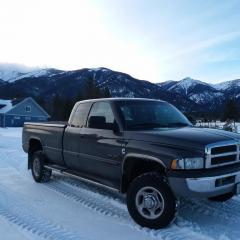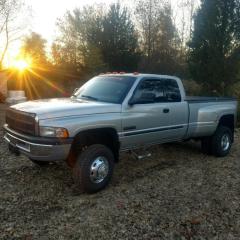- Replies 23
- Views 2k
- Created
- Last Reply
Top Posters In This Topic
-
DrJekyll86 7 posts
-
 Mopar1973Man 4 posts
Mopar1973Man 4 posts -
JAG1 3 posts
-
 Tractorman 3 posts
Tractorman 3 posts
Most Popular Posts
-
I had to check to be sure - the Airdog harness has a direct connection to the battery with a switched relay controlled by the original pumps harness.
-
Let me dive in... Cranking fuel pressure should be 7 to 12 PSI. If it is above 12 PSI it will create a hard start issue. Running fuel pressure should be 14 to 20 PSI. 14 PSI is
-
I'm not 100% certain, but if you're plugged into the original circuit, I think you're powering the lift pump directly from the ecm. I think you have to wire in a relay so the ecm triggers the relay an



I recently installed an Airdog lift pump (Airdog II 4G DF-100) and since then I’ve experienced varying crank times. Prior to the install, the truck would turn over for maybe 0.5 second before firing right up, every time, without fail. And it feels like half a second is generous on the long side. Since the install, crank times vary between the 0.5sec up to 2 seconds. The engine seems to run a bit smoother since the install and no indication of a misfire. The most noticeable impact of the install is varying cranking times.
From what I’ve read the symptoms could be due to worn injectors or poor fuel pressure but would love to hear the collective thoughts of the crew here. I’m thinking maybe 1 or 2 injectors may be going bad. Could crank duration be affected by which piston is up next in the firing order when an injector is failing? I’m sitting at just over 140k miles and I believe I’m on stock injectors and believe in at the end of their life. Injectors are planed for when I do the quad soon.
We did test the pump, which the newer air dog lift pumps are designed to build pressure and shut off until the engine is cranked. I know and have observed the pump cycling when the key is turned to on, just before cranking. We tested flow when we installed it by observing the return flow line draining into a bucket while the engine is running, which I admit was weak but the documentation also states the original return line will continue to function as before so volume will be split between the two. The install has been in for some time now and no detectable leaks have been observed.
I don’t have a set of gauges yet. My next upgrade is a quad with fuel pressure, trans temp and egt gauges but life keeps getting in the way of the truck budget.